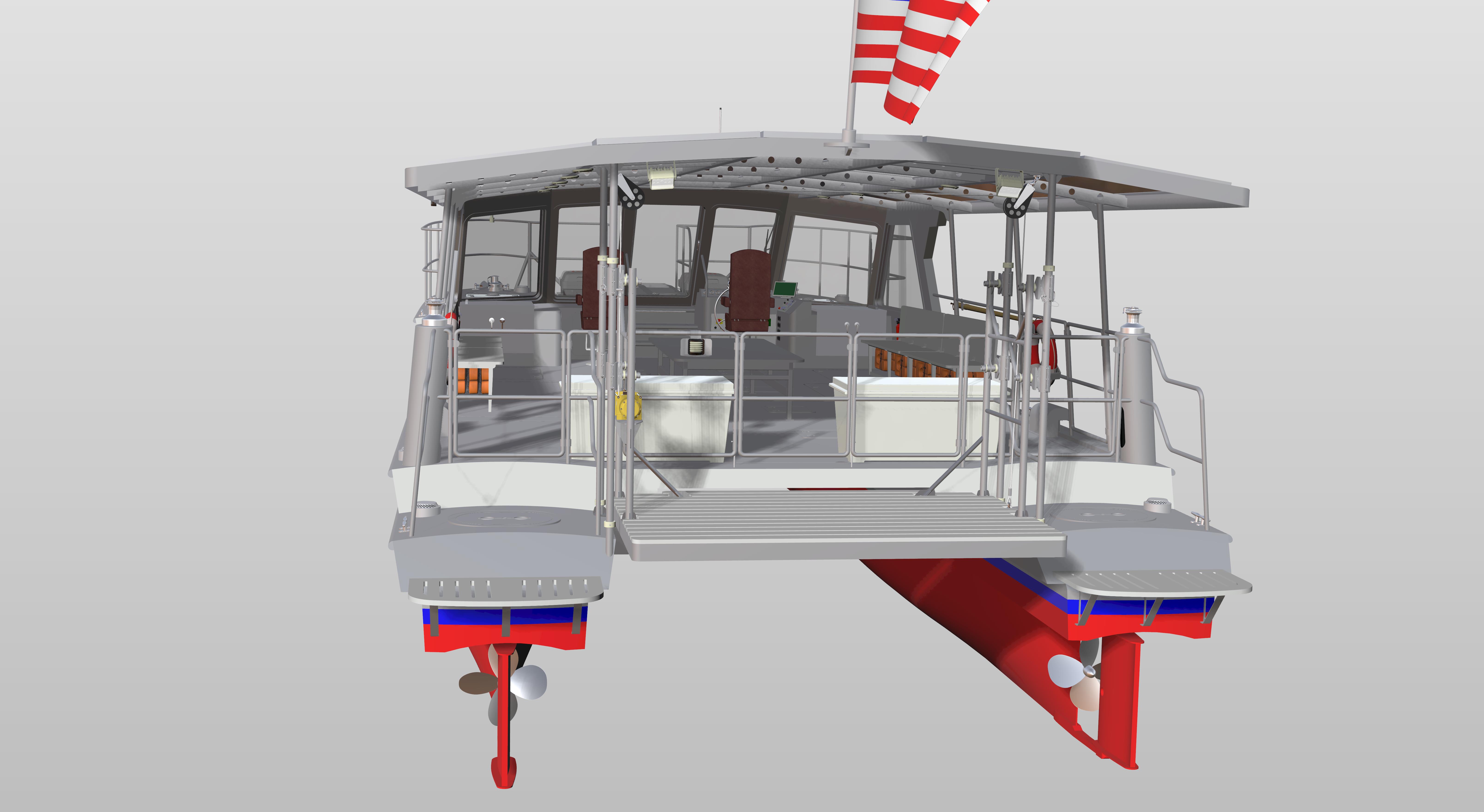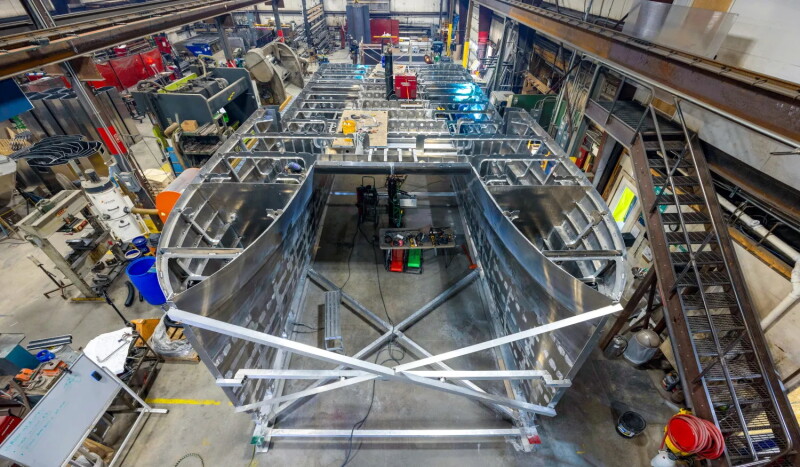The 49'x20'3"x3'8" aluminum hull carries the name Firefly, a catchy title that’s bound to be remembered as the new vessel maneuvers out of Camden, N.J., and travels the Delaware River for Upstream Alliance, Annapolis, Md., intent on fostering a healthy on-the-water relationship between those who use the rivers and the environment.
Carrying 32 passengers, Firefly will essentially be “an education vessel,” said Erica Carle, chief operating officer for Upstream Alliance. “It will take mostly middle school and high school students to learn about science, technology, engineering, math and the environment.”
In the Camden, N.J., area, there has been a “big need for education, especially on-water education,” said Carle. “Most people don’t go in the water, don’t even touch it, figure it’s a dirty river, and it was before, but it has been cleaned up.”
Firefly won’t be your typical 32-passenger river boat. Operating in the Delaware Bay area, it will be solar-powered, making 8- to 10-hour cruises most every day, maybe a dinner time cruise and then plug in and recharge all night. “It’s sort-of breaking new ground for all-solar electric,” said Dave Gerr, Firefly’s designer at Gerr Marine Naval Architects and Yacht Designers, New York.



This isn’t Gerr’s first venture into all-solar vessels. About eight years ago, Gerr designed the 44' Solaris, a 100% solar-powered tour boat for the Hudson River Maritime Museum. “It was the first 100% solar-electric boat approved by the U.S. Coast Guard for passenger carrying,” said Gerr. He added that “it’s been running for eight years at 5 knots, carrying 32 passengers and has never been plugged in and never had an ounce of fuel pumped into her.”
A Solaris copy won’t work for the Upstream Alliance’s Firefly because “we wanted a boat bigger and faster than Solaris, and when you go up in size, the boat’s weight increases and the power requirement increases.”
Firefly is being built at Lyman-Morse Boatbuilding, Thomaston, Maine, with an anticipated launch date at the end of July. Firefly carries several unusual design features “to make the boat workable,” said Gerr. Start with the 24 solar panels that he described as “some of the most efficient solar panels in terms of kilowatts generated per square foot.”
They are Jinko Solar JINKO JKM430M-72HLM-TV 430W bifacial panels that Gerr noted are stock panels but “unusual in a couple of ways.” On the Firefly they are bifacial, which, he said, is “a relatively new development, with solar on the top and the underside of the panel.” The undersides are exposed, facing down to the cockpit. They receive “ambient light energy reflected up from the deck and radiation throughout the air.” The top of the panels provides 80% to 85% of the propulsion work. The underside provides another 10% to 15% propulsion using reflected light.
Firefly is powered by a pair of QuietTorque 60.0 LC electric motors from Electric Yacht, Golden Valley, Minn. “They are 50 kW, which is 66 hp each,” Gerr said. The drives aren’t connected directly to the solar panels but to another of Firefly’s “unusual” design features, Lithionics lithium-ion batteries, which Gerr noted serve the same function as fuel tanks on a diesel-powered boat.
“The more battery capacity you have, the bigger your fuel tank capacity is” Gerr said, noting that lithium-ion batteries have the most storage capacity per unit weight and per unit volume of any electric technology. But that technology is not inexpensive. Firefly’s 48 lithium-ion propulsion batteries plus two lithium-ion-phosphate house batteries (for lighting, navigation, pumps, etc.) are the most expensive part of the vessel, costing half a million dollars. There’s also a lithium-ion battery fire suppression system.
Firefly’s motors and battery technology should give the 49-footer a maximum speed of 11 or 12 knots and a 9-knot cruising speed.
What’s the future for the Firefly experience? Well, it just might extend well beyond New Jersey and the Delaware River, for as Carle noted, “One of our board members wants to build 10 Fireflies at different locations along the East Coast.”




